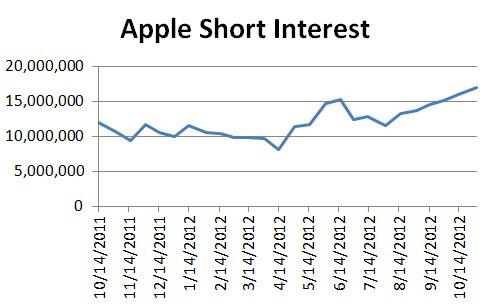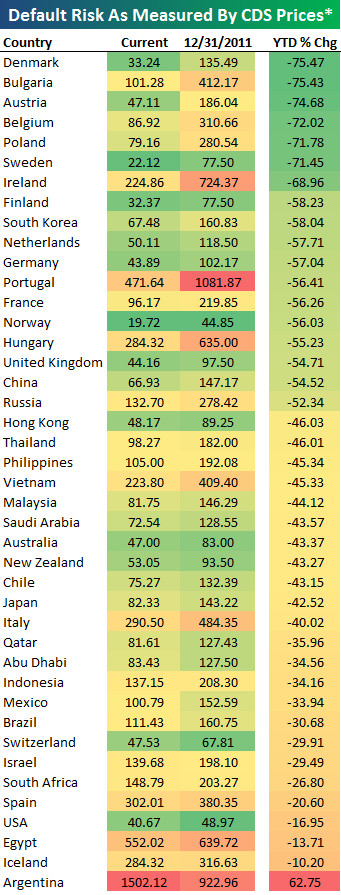Apple bears are showing their claws these days. The company’s once-meteoric stock (AAPL) has fallen about 25% from its all-time high of $705 per share set back on September 21:
Meanwhile, short interest in the stock is growing:
The absence of innovator extraordinaire Steve Jobs and the botched roll out of a mapping application on the iPhone 5 has The New York Times‘ Joe Nocera wondering: Has Apple Peaked? In a similar vein, check out The Street’s Rocco Pendola (If Steve Jobs Were Alive, He Would Fire Tim Cook) and Seeking Alpha’s Leonid Kanopka (The Apple Bubble is Ready to Burst) for more skepticism.
Is all this negativity really warranted? A little bit of perspective might help here.
1) Yes, Apple’s stock has taken a beating, then again so has the broader market. Even so, Apple shares are still up about 31% year-to-date as of Nov. 15. And let’s not forget that company’s market capitalization is a cool $500 billion, making it one of the most valuable enterprises on planet earth.
2) In its latest quarterly report, Apple reported a 24% jump in profits year over year – $6.6 billion, on $36 billion in revenue (up 27%). Those are blockbuster results.
3) Nor are its key franchises—the iPhone and iPad—showing any signs of fatigue. They grew 58% and 26% over the year-ago period, respectively.
Some Apple bears say that’s all well and good, but where’s the next big, disruptive technology, the must-have new gadget? Piper Jaffray Managing Director and Senior Research Analyst Gene Munster, acknowledged as the top sell-side analyst on Apple, says be patient — this growth story isn’t over yet.
Munster has a $910 per share price target on the stock is also forecasting 20%-plus revenue growth over the next three years. He thinks there’s plenty of growth in existing hardware products and Apple likely will make a splashy move into the TV set business in the coming years.
Photo: izzyplante
Certain information contained in this post is based upon forward-looking statements, information and opinions, including descriptions of anticipated market changes and expectations of future activity. The manager believes that such statements, information and opinions are based upon reasonable estimates and assumptions. However, forward-looking statements, information and opinions are inherently uncertain and actual events or results may differ materially from those reflected in the forward-looking statements. Therefore, undue reliance should not be placed on such forward-looking statements, information and opinions.






